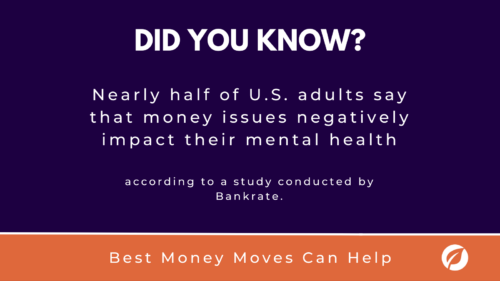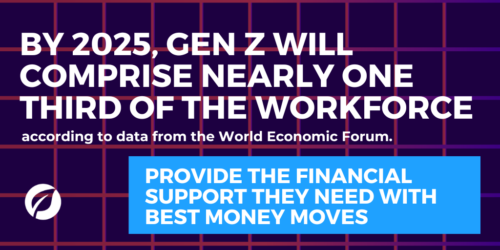
3 Ways to Help Employees Fight Financial Stress and Economic Uncertainty
U.S. workers face an uncertain economic future, and the stress takes its toll. Nearly half of U.S. adults say that money issues negatively impact their mental health, according to a Bankrate study. Financial stress can result in depression, insomnia and lowered productivity for those affected. However, the right financial wellness programs can help your team face an uncertain financial future head-on.
3 Ways to Help Employees Fight Financial Stress and Economic Uncertainty
1. Offer budgeting and other money management tools.
Food, gas and other household staples have increased dramatically throughout 2023. For example, eggs, a common household staple, have skyrocketed in price. According to Consumer Price Index data, egg prices in December 2022 are 60% higher compared to the year prior.
To afford increased prices for common household staples, some families may need to revisit their budgets and see where they can cut costs.
When it comes to budgeting, the more detailed the budget, the better. Robust budgeting tools allow employees to go tracking basic income and expenses — they help employees visualize points of overspending so that they can make choices about where to pare back. By detailing how each dollar is spent, employees have a deeper, more accurate view of their monthly expenses. This makes it easier to identify areas where they can dial back spending.
2. Help employees alleviate financial stress with an emergency fund.
Whether it be an emergency car repair or medical bill, generally, 4 in 10 Americans cannot afford a $1000 emergency without going into debt, according to a Bankrate study. To cover emergency expenses, many employees use a credit card or take out a loan; however, these options can contribute to a rise in debt and drop in credit scores. Moreover, financial emergencies can exacerbate employees’ money-related stress and anxiety.
To help address financial uncertainty, some companies have been helping employees proactively prepare for unexpected expenses by offering emergency funds. As a benefit offering, emergency funds encourage employees to save money for a rainy day, while improving their financial wellness. Rather than going into debt or borrowing from one’s 401(k), emergency funds provide a sense of security for when unexpected costs arise.
Similar to retirement match programs, some companies are matching employees’ contributions to their emergency savings fund. Match programs incentivize employees to allocate savings toward their emergency fund. Simultaneously, match programs give employees the opportunity to multiply and accelerate their fund’s savings.
3. Provide 1:1 financial advising to those who need it most.
Most financially-stressed employees want help, however many don’t know where to begin. There’s a lot of stigma around money and debt — some people are embarrassed about their debt and don’t want anyone to know, according to a PwC report. For others, money isn’t discussed in their family, resulting in apprehension about asking for help. By offering financial wellness benefits, like money coaching, employers can help break down these stigmas and empower those seeking help.
According to a Bankrate study, over 60% of Americans don’t expect their financial situation to improve in 2023. This leaves many Americans at risk for prolonged financial stress and worries, which can have detrimental impacts to the body and overall wellbeing.
To help employees dial down their stress, many companies are adding financial advising to their benefit offerings. For some employees, budgeting tools aren’t enough. They need someone to talk to and more importantly, they need personalized guidance on how to navigate financial situations. By having a financial advisor, employees can receive 1:1 support and ultimately improve their financial wellbeing and situation.
Financial stress putting a strain on your workforce? Fight back with Best Money Moves.
Best Money Moves is a mobile-first financial wellness solution designed to help dial down employees’ most top-of-mind financial stresses. As a comprehensive financial well-being solution, Best Money Moves offers 1:1 money coaching, budgeting tools and other resources to improve employee financial wellbeing. Our AI platform, with a human-centered design, is easy to use and fit for employees of any age.
Whether it be retirement planning or securing a mortgage, Best Money Moves can guide employees through the most difficult financial times and topics. Our dedicated resources, partner offerings and 700+ article library make Best Money Moves a leading benefit in bettering employee financial wellness.
To learn more about Best Money Moves Financial Wellness Platform, let’s schedule a call. Contact us and we’ll reach out to you soon.









